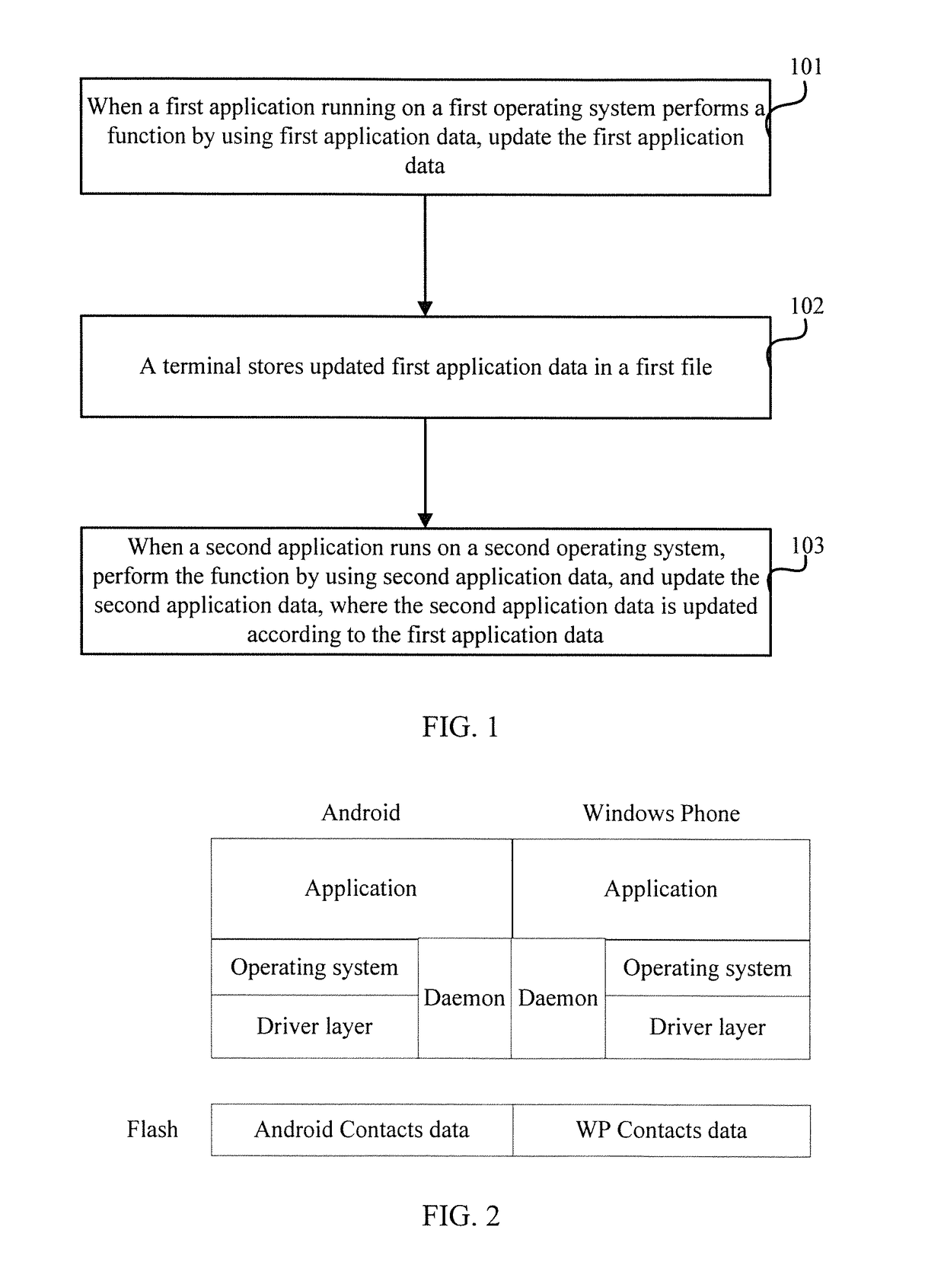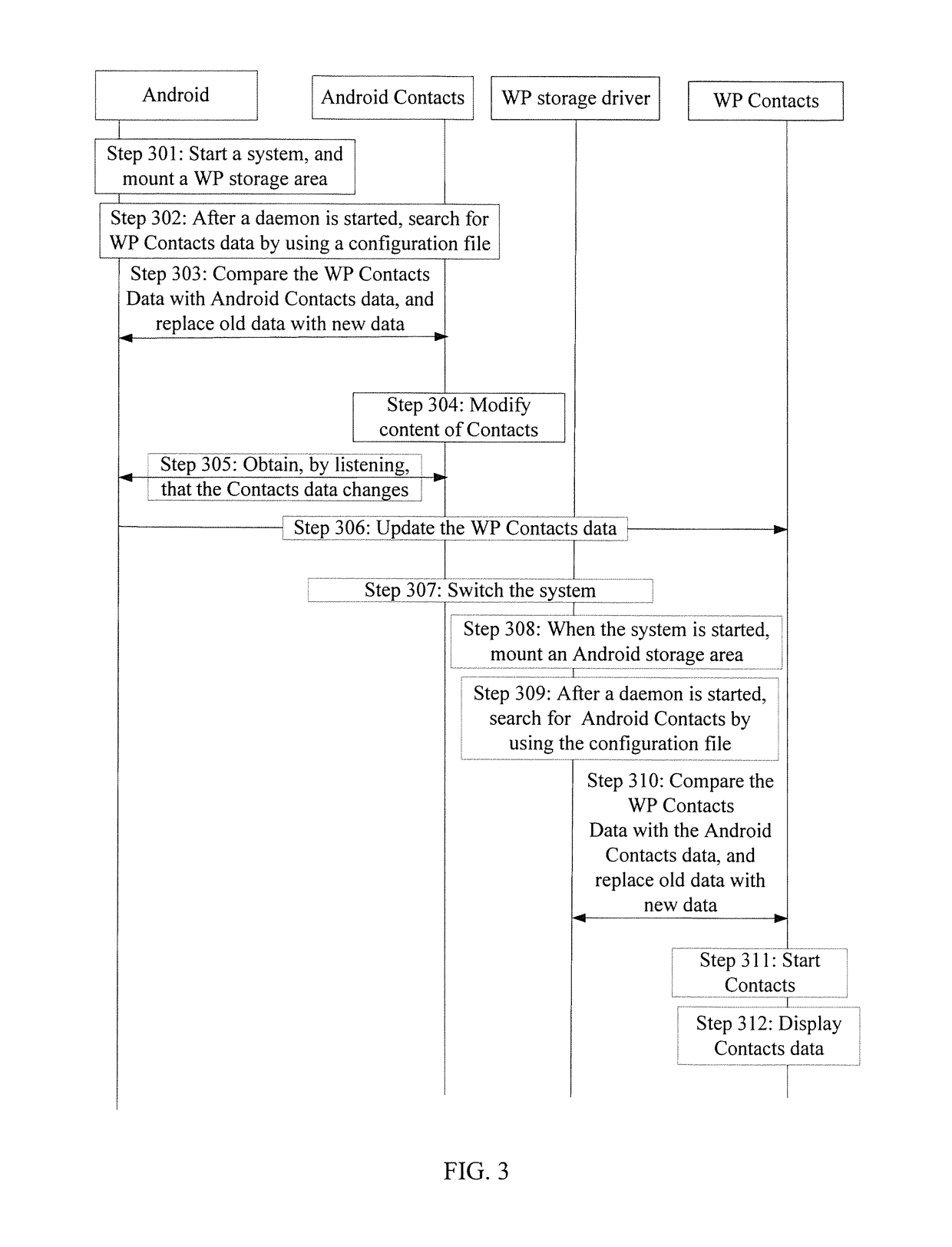Application data synchronization method and apparatus
- Summary
- Abstract
- Description
- Claims
- Application Information
AI Technical Summary
Benefits of technology
Problems solved by technology
Method used
Image
Examples
embodiment 1
[0047]According to the solution provided by the embodiment of the present invention, application data sharing between two operating systems is achieved by means of internal sharing of a terminal, and therefore, when data of a first application that requires data sharing on either operating system is updated, updated data may be shared with the other operating system (a second application having a same function with the first application is installed in the other operating system).
[0048]In addition, when the other operating system is started and the application is used, if it is found that the operating system is updated, data of the second application may also be updated by using updated data of the first application.
[0049]As shown in FIG. 1, based on the foregoing possible implementation manners of data updating of two systems, the embodiment of the present invention provides an application data synchronization method, where the method is applied to a terminal, a first operating sy...
embodiment 2
[0058]In a first data storage manner, data corresponding to the first application and data corresponding to the second application are separately stored in data of the two operating systems, that is, the first application data is stored in a first file of the terminal, and the second application data is stored in a second file of the terminal, where the first file and the second file are different files. In the embodiment, the first file is stored in a first storage location of the terminal, and the second file is stored in a second storage location of the terminal, where the first storage location is different from the second storage location. Running of the first application installed on the first operating system is supported by the first file stored in the first location, and running of the second application is supported by the second file stored in the second location. In the embodiment, a specific implementation of updating of the files and the data may be as follows:
[0059]Fi...
embodiment 3
[0102]In a second data storage manner, data corresponding to applications that have a same function in two operating systems and that need to share data is stored in one file, that is, the first application data and the second application data are stored in a data sharing file of the terminal. In the embodiment, a specific implementation of updating of the file and the application data may be:
[0103]mapping, by the first operating system, the first file to a file system of the first operating system according to the data sharing file; and when the first operating system detects a request for storing the first application data in the first file by the first application program, storing, by the first operating system, the first data in the data sharing file according to a preset format.
[0104]Because a data file on a file system of an operating system is used by an application program, and is mapped to the file system of the operating system by a driver of the operating system according...
PUM
 Login to View More
Login to View More Abstract
Description
Claims
Application Information
 Login to View More
Login to View More - R&D
- Intellectual Property
- Life Sciences
- Materials
- Tech Scout
- Unparalleled Data Quality
- Higher Quality Content
- 60% Fewer Hallucinations
Browse by: Latest US Patents, China's latest patents, Technical Efficacy Thesaurus, Application Domain, Technology Topic, Popular Technical Reports.
© 2025 PatSnap. All rights reserved.Legal|Privacy policy|Modern Slavery Act Transparency Statement|Sitemap|About US| Contact US: help@patsnap.com



